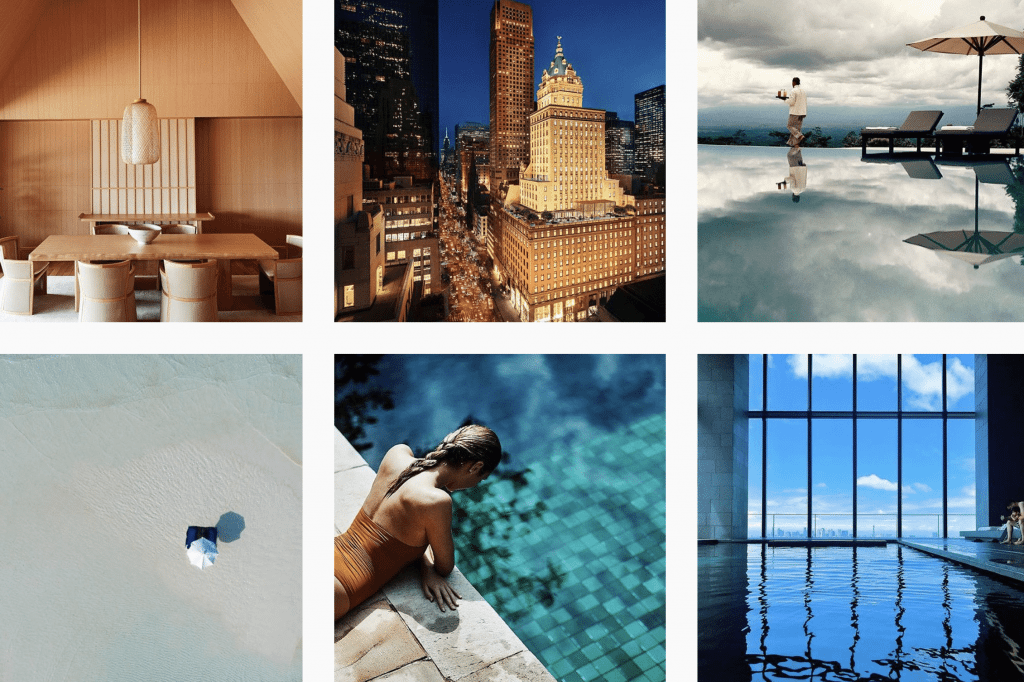Luxury Travel Brands Can't Afford to Be So Far Behind in Digital Engagement

Skift Take
Since Skift’s luxury coverage launched in April, we’ve scanned hundreds of luxury websites from custom concierge sites to those of refined luggage brands.
While many luxury travel services have deliciously designed websites, many seem to lack the innovation that might be evident in their services, and have simple sites with little online engagement.
It is because luxury clients are perceived as part of older, more analog generations? Are their customers booking over the phone or through travel agents, rendering companies' digital presences an after-thought?
Airbnb Emerging as a Factor
Luxury brands that fail to develop sophisticated digital presences and purchase pathways are beginning to face competition from Airbnb, which many stakeholders did not believe had the potential to touch the luxury sector.
“Airbnb became a real competitor for luxury brands when they started offering a luxury premium range of stays for their guests, with an incredibly easy-to-use booking system, which includes personalized recommendations of local experiences that they can book themselves," says Chris Donnelly, founder of Verb, a luxury agency in London focusing on Web design and digital marketing.
"The streamlined path-to-purchase from mid-market brands such as Airbnb or Expedia is a real pull for Millennial consumers."
Embracing new customers
We spoke to luxury digital agencies and the brands themselves for insight into how luxury travel brands can build superior Web presences that include both beautiful, alluring visuals and easy-to-use paths to purchase.
Yaroslaw Nichiporets heads the New York office of Vintage Agency, which is one of the most-awarded Web design and production agencies in Ukraine. Vintage Agency works with many brands that most Western companies don’t currently serve.
When asked whether Vintage’s luxury clients delayed in investing in their digital presences because their customers aren’t online, Nichiporets replied that it is unreasonable for brands to ignore millennials when considering the luxury business.
“Websites are usually being made to develop new business, not to keep the things as they are,” he says.
While millennials might spend less on elite accommodations, they are willing to splurge on available luxury experiences there.
Getting culinary and musical inspiration from platforms like Yelp and Spotify, respectively, Nichiporets says: “Imagine a hotel where your favorite meal is cooked and served in local ethnic style, and your favorite song is played in a remix with local traditional singing. This is the new luxury."
He encourages brands to engage in deep research before designing their digital presence. Looking at something as simple as website search queries and pages visited can shift marketing priorities for a brand.
Nichiporets also suggests executives look at how their sales people approach customers to assess how this might relate to merchandising online.
“Imagine coming into Bugatti salon, and be immediately approached by a salesperson with questions like ‘What model you want?’ or ‘How much money do you have?’ and then being directed to a catalog with price tags next to small photos of cars,” he says.
Price is usually one of the last factors they discuss.
Losing market share
Verb is a luxury digital agency in London specializing in luxury web design and digital marketing whose leaders also underline the importance of building a digital presence no matter your primary customer base.
“Luxury hotels and travel brands reluctant to invest in digital technologies have seen a lack of engagement with their consumers, resulting in a loss of market share due to their disregard for a very obvious behavioral shift amongst their luxury consumers,” says Donnelly.
Aman Resorts or Song Saa are good examples of hospitality brands engaging with luxury customers through social media.
“#Amanjunkie is the perfect example of a luxury target audience fully engaged through digital platforms where Aman takes advantage of the content created to share their experiences worldwide,” says Clara Saladich, Verb marketing manager.
The #Amanjunkie hashtag has been used 10,600 times on Instagram.
https://www.instagram.com/p/BaU4TLdAPXe/?taken-by=msalyssia
For companies whose target customers are more likely to discover them through Google rather than Instagram, content still plays an important role. Google ranks brands on searches, and content creation helps refine brand values and services.
“Even if your target audience is not millennials, you need to build your brand’s profile and spread the word about it, as well as set a tone of voice and a communications strategy in line with your customers' (or future customers') personality and preferences,” Bird Travel PR founder Daisy Bird said at Verb’s July event on the evolving luxury hospitality sector.
Making Luxury More Visible
Abercrombie & Kent is a great example of a luxury brand navigating to a more engaging digital presence. Its website was recently redesigned although the marketing team says it is still very much a work in progress.
Although the brand has a beautiful Instagram, it is focusing its efforts on how some of the world’s most luxurious travel experiences can be translated on screen. The team started by expanding the experiential content to give travel agents more photos, video, and information online.
With numerous luxury brands failing to provide appealing imagery and videos, few are ready to take the next step. Nichiporets of Vintage Agency likens simple websites to static posters. Savvy luxury brands, he says, should consider gamification, online 3D graphics, interactivity, and virtual reality.
For now, a beautiful and functional digital presence should be a primary goal for any luxury brand.




